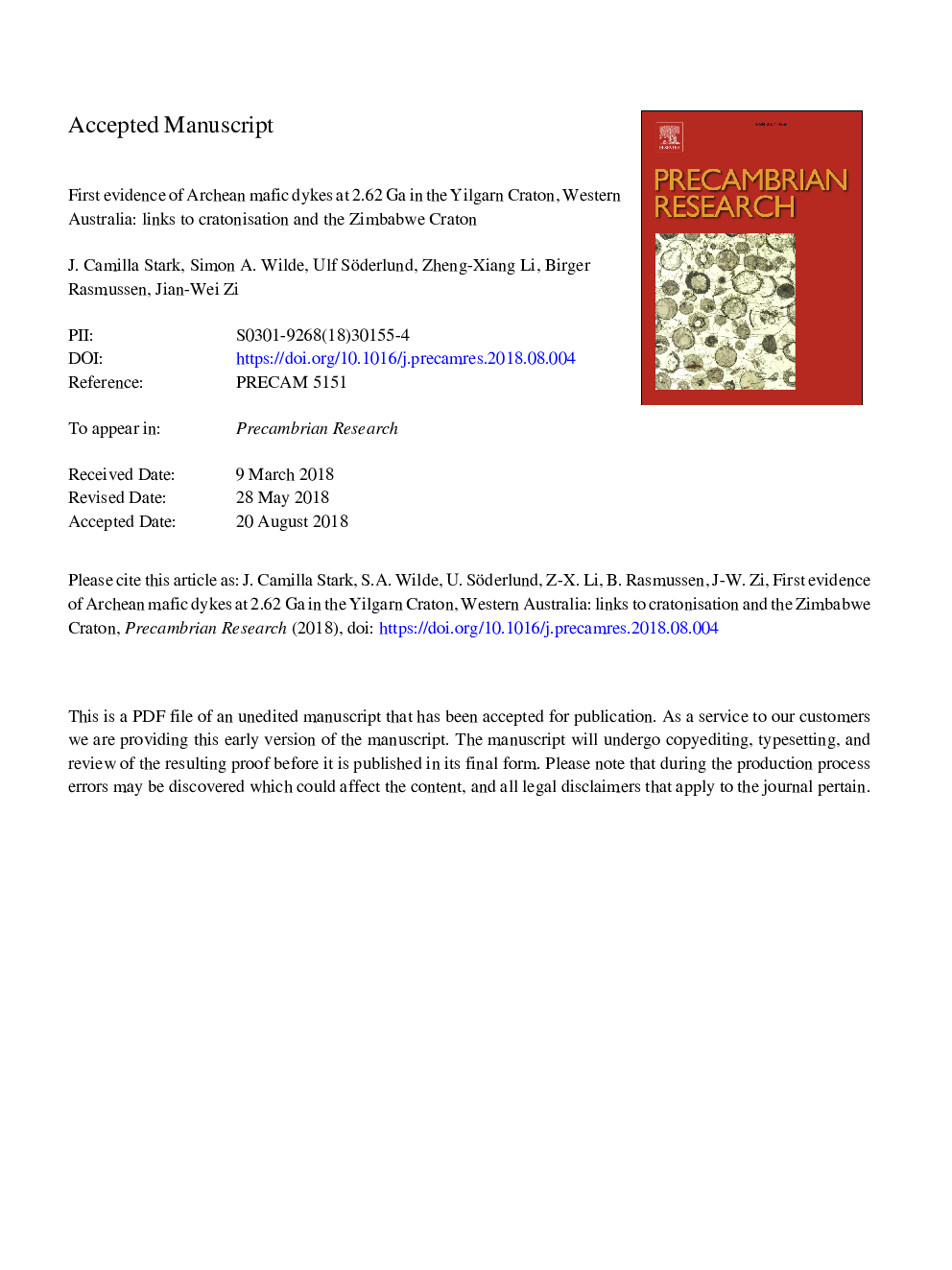| Article ID | Journal | Published Year | Pages | File Type |
|---|---|---|---|---|
| 10144986 | Precambrian Research | 2018 | 56 Pages |
Abstract
The Archean Yilgarn Craton in Western Australia hosts at least five generations of Proterozoic mafic dykes, the oldest previously identified dykes belonging to the ca. 2408-2401â¯Ma Widgiemooltha Supersuite. We report here the first known Archean mafic dyke dated at 2615â¯Â±â¯6â¯Ma by the ID-TIMS U-Pb method on baddeleyite and at 2610â¯Â±â¯25â¯Ma using in situ SHRIMP U-Pb dating of baddeleyite. Aeromagnetic data suggest that the dyke is part of a series of NE-trending intrusions that potentially extend hundreds of kilometres in the southwestern part of the craton, here named the Yandinilling dyke swarm. Mafic magmatism at 2615â¯Ma was possibly related to delamination of the lower crust during the final stages of assembly and cratonisation, and was coeval with the formation of late-stage gold deposit at Boddington. Paleogeographic reconstructions suggest that the Yilgarn and Zimbabwe cratons may have been neighbours from ca. 2690â¯Ma to 2401â¯Ma and if the Zimbabwe and Kaapvaal cratons amalgamated at 2660-2610â¯Ma, the 2615â¯Ma mafic magmatism in the southwestern Yilgarn Craton may be associated with the same tectonic event that produced the ca. 2607-2604â¯Ma Stockford dykes in the Central Zone of the Limpopo Belt. Paleomagnetic evidence and a similar tectonothermal evolution, including coeval low-pressure high-temperature metamorphism, voluminous magmatism, and emplacement of mafic dykes, support a configuration where the northern part of the Zimbabwe Craton was adjacent to the western margin of the Yilgarn Craton during the Neoarchean. Worldwide, reliably dated mafic dykes of this age have so far been reported from the Yilgarn Craton, the Limpopo Belt and the São Francisco Craton.
Related Topics
Physical Sciences and Engineering
Earth and Planetary Sciences
Geochemistry and Petrology
Authors
J. Camilla Stark, Simon A. Wilde, Ulf Söderlund, Zheng-Xiang Li, Birger Rasmussen, Jian-Wei Zi,
